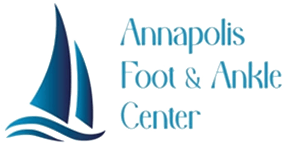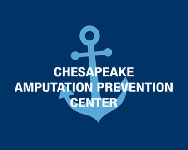Why Is Occupational Foot Health Important?
Your feet are your foundation at work, yet they're often overlooked until problems arise. Work-related foot injuries account for over 60,000 workers' compensation claims annually, with many more unreported cases of chronic foot pain affecting job performance and quality of life.
Different occupations place unique demands on your feet, from prolonged standing and walking to exposure to hazardous materials and heavy lifting. At Annapolis Foot & Ankle Center, our board-certified podiatrists understand how workplace conditions contribute to foot problems and provide specialized treatment and prevention strategies for working professionals throughout Central Maryland.
Common Work-Related Foot Problems by Profession
Healthcare Workers (Nurses, CNAs, Medical Assistants):
Healthcare professionals spend 8-12 hours on their feet, often on hard surfaces:
- Plantar fasciitis - Heel pain from prolonged standing
- Metatarsalgia - Ball-of-foot pain from constant pressure
- Varicose veins - Poor circulation from standing
- Achilles tendonitis - Strain from repetitive walking
- Stress fractures - Overuse injuries from long shifts
Learn more about our heel pain treatment options.
Construction and Manual Labor Workers:
Physical demands and hazardous environments create multiple risks:
- Puncture wounds - From nails, screws, and sharp objects
- Crush injuries - From falling objects or heavy equipment
- Burns - Chemical or thermal injuries to feet
- Ankle sprains - From uneven surfaces and ladders
- Foot fractures - Impact injuries from tools or materials
Explore our foot trauma treatment services.
Retail and Service Workers:
Long hours of standing and walking on hard floors cause:
- Chronic foot fatigue - Muscle strain and soreness
- Arch pain - Collapsed or strained arches
- Heel spurs - Calcium deposits from repetitive stress
- Bunions - Worsened by poor-fitting work shoes
- Corns and calluses - Pressure points from footwear
Learn about our bunion treatment options.
Office Workers and Desk Jobs:
Sedentary work creates different but significant problems:
- Poor circulation - Swelling and blood pooling
- Muscle weakness - Decreased foot and ankle strength
- Stiffness - Reduced flexibility and range of motion
- Weight-related issues - Increased pressure on feet
Food Service and Restaurant Workers:
Fast-paced environments with additional hazards:
- Slip and fall injuries - Wet, greasy floors
- Burns - Hot liquids and surfaces
- Cuts - Broken glass and sharp utensils
- Repetitive strain - Constant movement and lifting
Most Common Workplace Foot Injuries
Acute Traumatic Injuries:
Sudden injuries requiring immediate medical attention:
Puncture Wounds: Objects penetrating the sole or top of foot can introduce bacteria deep into tissues. Even small puncture wounds can become serious infections if not properly treated.
Fractures and Breaks: Impact from falling objects, crush injuries, or falls can break bones in feet or ankles. These require immediate evaluation to prevent long-term complications.
Sprains and Strains: Twisting or rolling ankles on uneven surfaces, stairs, or while carrying heavy loads can damage ligaments and muscles.
Lacerations: Cuts from tools, glass, or machinery can damage tendons, nerves, or blood vessels requiring surgical repair.
For immediate trauma care, contact our office for same-day emergency appointments.
Chronic Overuse Injuries:
Gradual onset problems from repetitive workplace activities:
Plantar Fasciitis: The most common work-related foot complaint, causing sharp heel pain especially after periods of rest. Often develops in workers who stand or walk extensively.
Achilles Tendonitis: Inflammation of the heel cord from repetitive stress, common in workers who climb stairs, ladders, or walk on inclined surfaces.
Stress Fractures: Small cracks in bones from repetitive impact, particularly common in healthcare workers and others on concrete floors.
Neuromas: Nerve compression causing burning pain between toes, often from tight work boots or repetitive pressure.
Learn about our neuroma treatment services.
Workplace Foot Safety and Prevention Strategies
Proper Work Footwear Selection:
Safety Requirements by Industry:
- Construction: Steel toe caps, puncture-resistant soles, ankle support
- Healthcare: Non-slip soles, closed-toe design, easy-to-clean materials
- Food Service: Slip-resistant soles, closed-toe, spill-resistant materials
- Manufacturing: Metatarsal guards, electrical hazard protection, chemical resistance
- Office: Supportive dress shoes with good arch support
Essential Features for All Work Shoes:
- Proper fit - Room for toes, secure heel, appropriate width
- Arch support - Prevents fatigue and plantar fasciitis
- Shock absorption - Cushioning for impact protection
- Breathable materials - Prevents moisture buildup and fungal infections
- Appropriate sole - Non-slip, puncture-resistant as needed
Workplace Modifications and Ergonomics:
- Anti-fatigue mats - Cushioning for workers who stand
- Footrests - For seated workers to improve circulation
- Job rotation - Varying tasks to reduce repetitive stress
- Regular breaks - Time to rest and stretch feet
- Proper flooring - Non-slip surfaces, appropriate materials
Industry-Specific Foot Health Guidelines
Healthcare Worker Foot Health Program:
Pre-Shift Preparation:
- Foot stretches - Calf stretches, toe flexion, ankle rolls
- Proper socks - Moisture-wicking, cushioned materials
- Shoe inspection - Check for wear, proper lacing
- Compression stockings - For workers with circulation issues
During Work:
- Change positions frequently - Shift weight, flex feet
- Use support surfaces - Anti-fatigue mats when possible
- Stay hydrated - Reduces swelling and cramping
- Take micro-breaks - 30-second foot stretches every hour
Post-Shift Recovery:
- Elevate feet - 15-20 minutes to reduce swelling
- Ice sore areas - 10-15 minutes for inflammation
- Gentle massage - Improve circulation and reduce tension
- Change shoes - Allow work shoes to air dry
Construction Worker Safety Protocol:
Daily Safety Checklist:
- Inspect work area - Clear debris, identify hazards
- Check safety equipment - Boots, guards, protective gear
- Plan movements - Avoid rushing, use proper lifting techniques
- Stay alert - Watch for falling objects, unstable surfaces
Injury Prevention:
- Proper lifting technique - Leg muscles, not back
- Three-point contact - When climbing ladders or scaffolding
- Tool maintenance - Sharp, properly functioning equipment
- Communication - Alert team members to hazards
When to Seek Professional Treatment
Immediate Medical Attention Required:
- Deep cuts or puncture wounds - Risk of infection or nerve damage
- Suspected fractures - Severe pain, deformity, inability to bear weight
- Signs of infection - Redness, warmth, swelling, drainage
- Severe sprains - Significant swelling, instability
- Chemical or thermal burns - Any workplace burn injury
Don't wait - call us immediately at 410-266-7666 for urgent workplace injuries.
Schedule an Appointment for:
- Persistent pain - Discomfort lasting more than a few days
- Recurring problems - Issues that keep returning
- Performance impact - Pain affecting work ability
- Progressive symptoms - Problems getting worse over time
- Preventive care - High-risk occupation assessment
Advanced Treatment Options for Work-Related Foot Injuries
Conservative Treatments:
Custom Orthotics for Workers:
Our custom orthotics are designed specifically for work environments:
- Occupation-specific design - Tailored for your work demands
- Safety shoe compatibility - Fits in required footwear
- Durability - Built to withstand workplace conditions
- Multiple pairs - For different work shoes
MLS Laser Therapy:
Our pain-free MLS laser therapy offers:
- No downtime - Return to work immediately
- Pain reduction - Effective for chronic conditions
- Accelerated healing - Faster recovery times
- Non-invasive - No surgery or medications
Surgical Solutions:
When conservative treatment isn't enough, our minimally invasive surgical options include:
- Faster recovery - Return to work sooner
- Smaller incisions - Less post-operative pain
- Reduced complications - Lower infection risk
- Outpatient procedures - Same-day surgery options
Workers' Compensation and Occupational Injuries
Understanding Your Rights:
- Immediate reporting - Notify employer of injury promptly
- Medical treatment - Right to appropriate care
- Choice of provider - You may choose your podiatrist
- Return to work - Modified duties during recovery
Important: Document all workplace injuries thoroughly and seek professional medical evaluation even for seemingly minor injuries.
Working with Insurance:
Our experienced staff helps navigate workers' compensation claims:
- Documentation - Proper medical records and reports
- Communication - Direct contact with adjusters
- Treatment authorization - Obtaining approval for care
- Return-to-work planning - Coordinating with employers
Preventing Future Workplace Foot Injuries
Employee Education Programs:
We offer workplace foot health education including:
- Proper footwear selection - Industry-specific guidelines
- Injury prevention techniques - Safe work practices
- Early problem recognition - When to seek help
- Foot care routines - Daily maintenance strategies
Employer Wellness Programs:
- On-site foot screenings - Early problem detection
- Ergonomic assessments - Workplace modifications
- Safety training - Injury prevention education
- Health promotion - Overall wellness strategies
Exercises for Workplace Foot Health
At-Work Exercises (Can be done in work shoes):
For Standing Workers:
- Calf raises - Lift up on toes, hold 5 seconds
- Weight shifting - Shift weight from foot to foot
- Ankle pumps - Flex and point feet
- Toe curls - Curl and spread toes
For Seated Workers:
- Ankle circles - Rotate feet in both directions
- Heel and toe taps - Alternate lifting heels and toes
- Calf stretches - Extend leg, flex foot toward shin
- Under-desk walks - March feet in place
Pre and Post-Work Routines:
Morning Warm-up (5 minutes):
- Calf stretches - 30 seconds each leg
- Plantar fascia stretch - Pull toes toward shin
- Achilles stretch - Wall stretch, 30 seconds each
- Toe flexion - Point and flex 10 times
Evening Recovery (10 minutes):
- Ice bath - Cold water for inflamed areas
- Gentle massage - Roll foot over tennis ball
- Elevation - Feet up for 15-20 minutes
- Stretching - Focus on tight areas
Footwear Recommendations by Profession
Recommended Brands and Features:
Healthcare Workers:
- Features needed: Slip-resistant, comfortable, easy to clean
- Recommended features: Memory foam insoles, arch support, lightweight
- Replacement schedule: Every 6-8 months with heavy use
Construction Workers:
- Safety requirements: Steel/composite toe, puncture-resistant sole
- Additional features: Ankle support, waterproof, electrical hazard protection
- Replacement schedule: When safety features are compromised
Food Service Workers:
- Essential features: Slip-resistant, closed-toe, easy to clean
- Comfort additions: Cushioned insole, breathable materials
- Maintenance: Daily cleaning, regular replacement
Creating a Workplace Foot Health Program
Assessment and Planning:
- Risk evaluation - Identify workplace hazards
- Employee surveys - Current foot health issues
- Injury analysis - Review past incidents
- Cost-benefit analysis - ROI of prevention programs
Implementation Strategies:
- Management buy-in - Leadership support and resources
- Employee engagement - Voluntary participation and feedback
- Professional partnerships - Work with qualified podiatrists
- Ongoing evaluation - Monitor program effectiveness
Frequently Asked Questions About Occupational Foot Health
A: Yes, if your foot condition is directly related to your work activities, it may be covered under workers' compensation, even if it developed gradually over time.
A: This depends on your job and shoe quality. Healthcare workers typically need new shoes every 6-8 months, while office workers may go 12-18 months. Replace when you notice worn soles, reduced cushioning, or foot pain.
A: Custom orthotics can be very effective for work-related foot problems, especially for people who stand or walk extensively. They're designed specifically for your feet and work environment.
A: Seek immediate medical attention for serious injuries, report the incident to your supervisor, document what happened, and contact our office for proper evaluation and treatment.
A: Yes, prolonged use of improper footwear can lead to permanent changes in foot structure, chronic pain conditions, and increased injury risk. Investment in proper work shoes is crucial.
Why Choose Annapolis Foot & Ankle Center for Occupational Foot Health?
Our Workplace Injury Expertise:
- Board-certified podiatric surgeons with workers' compensation experience
- Same-day emergency appointments for workplace injuries
- Insurance and workers' comp navigation - We handle the paperwork
- Return-to-work planning - Get you back to work safely
- Employer education programs - Workplace safety training
- Advanced treatment options - Latest technologies and techniques
Comprehensive Services:
- Acute injury treatment - Emergency and urgent care
- Chronic condition management - Long-term solutions
- Preventive care programs - Stop problems before they start
- Custom orthotics - Work-specific foot support
- Surgical options - When conservative treatment isn't enough
Don't Let Foot Problems Affect Your Livelihood
Whether you're dealing with a workplace injury or want to prevent foot problems from affecting your job performance, our experienced team provides comprehensive occupational foot health services.
Schedule your work-related foot injury evaluation today by calling 410-266-7666 or contact us online. We offer same-day appointments for workplace injuries and workers' compensation cases.
Serving working professionals throughout Annapolis, Anne Arundel County, Prince George County, Calvert County, St. Mary's County, Kent Island, and the Eastern Shore for over 30 years.
Related Services:
- Foot Trauma and Injury Treatment
- Heel Pain and Plantar Fasciitis
- Custom Orthotics for Workers
- Minimally Invasive Surgery Options
- Active Lifestyle Injury Treatment







